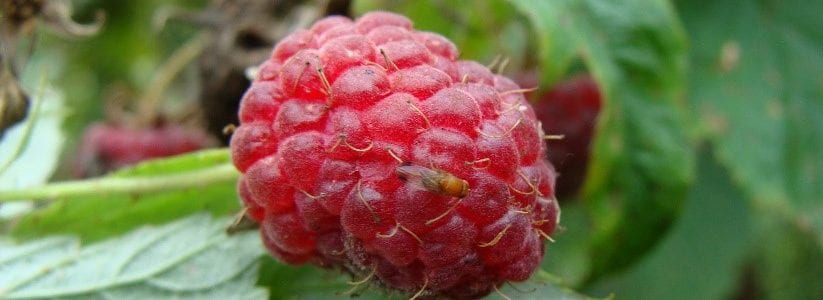During the week ending on June 14, 2021, one male SWD was caught in a raspberry planting in Essex County. The insect was caught on a red sticky card trap. There are four traps set on this site. The traps are being monitored by Andy Galimberti, Eastern NY Commercial Horticulture Program of CCE.

At another location, in the Lake Ontario region, raspberries were seen that were starting to color. The grower at this location thought that was early for his farm. Make sure you watch crop development.
In lab studies, when female SWD are given no other choice but a fruit that is beginning to ripen, she can lay eggs in that fruit.
This is the time to prepare for SWD management and to focus on cultural controls, making sure everything is in tip top shape.
- Canopy, irrigation, and weed management will all make the environment in the planting less favorable for SWD - keeping it sunnier, dryer, and airier.
- Plan to refrigerate fresh fruit upon harvest and make sure your coolers are in good working order. Raspberries and blueberries tolerate very low temperature storage, but SWD can't.
- Practice excellent sanitation of cull fruit - eliminate it so it provides no food or reproductive resources for SWD.
- Consider exclusion netting - feasibility, price, construction. Read about it in this blog, "Thinking exclusion?" blogs.cornell.edu/swd1/2020/03/27/thinking-exclusion/
- Practice regular fruit sampling at each harvest and assess the fruit for larvae using salt flotation.
- Devise an insecticide program to protect fruit. The insecticide quick guides have been updated for 2021. Find them on the SWD Management page.

